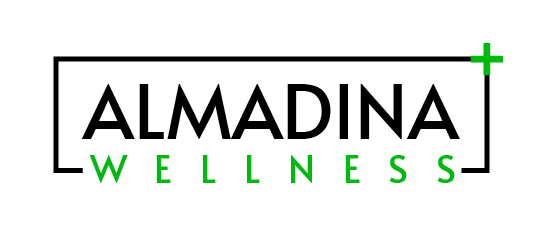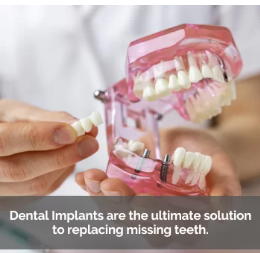Choosing the Right Dental Lab Materials for Prosthetic Fabrication
Modern dental laboratories rely on two primary fabrication methods: wax-lost casting and digital CAD/CAM milling, each requiring specific dental lab materials to create high-quality prosthetics. Dental technicians select materials based on patient-specific oral conditions, ensuring functionality, comfort, and longevity. Understanding both fabrication methods allows technicians to optimize workflow and achieve superior results.
The Importance of Dental Lab Materials in Prosthetic Fabrication
Selecting the right dental lab materials is critical in prosthetic fabrication, as every patient presents unique requirements. Technicians assess factors like:
- Jawbone density – Determines the durability needed for implants or frameworks.
- Occlusion and bite force – Influences material selection to withstand daily wear.
- Aesthetic preferences – Guides choices between high-translucency ceramics and durable metal alloys.
- Gingival health – Affects denture base material options for a comfortable fit.
With these considerations in mind, technicians choose either the wax-lost casting method for metal frameworks or the digital CAD/CAM milling method for high-precision restorations.
Wax-Lost Casting: Traditional Prosthetic Fabrication
The wax-lost casting method has been widely used in dental labs for decades, allowing technicians to fabricate durable metal frameworks for partial dentures and crowns. This manual process ensures accuracy but requires experienced craftsmanship and specialized equipment.
Dental Lab Materials for Wax-Lost Casting
- Casting wax – Forms the initial framework prototype.
- Investment material – Creates a mold for casting metal frameworks.
- Metal alloys (Cobalt-Chromium, Titanium, Gold) – Used for fabricating strong, long-lasting restorations.
- Acrylic resin – Provides stability for denture bases.
- Polishing compounds – Enhance aesthetics and smoothness of cast restorations.
Wax-Lost Casting Equipment Sequence
| Step | Equipment | Function |
|---|---|---|
| 1 | Duplicating Machine | Copies the original dental model for consistency in fabrication. |
| 2 | Dental Surveyor | Assesses insertion paths and framework alignment. |
| 3 | Pindex Dental Machine | Mounts the model accurately for precise articulation. |
| 4 | Dental Vacuum Mixer | Eliminates air bubbles while mixing investment materials. |
| 5 | Centrifugal Casting Machine | Uses high-speed rotation to pour molten metal into molds. |
| 6 | Saw Cutting Machine | Separates excess metal from the cast framework. |
| 7 | High-Speed Grinder | Refines the framework to match design specifications. |
| 8 | Sandblaster Machine | Cleans and textures the prosthetic surface. |
| 9 | Electrolytic Polisher | Provides a smooth finish to metal frameworks. |
| 10 | Polishing Lathe | Enhances the final appearance of prosthetics. |
| 11 | Flexible Denture Injection System | Molds flexible denture materials for patient comfort. |
| 12 | Electric Dental Lab Pressure Pot | Cures denture bases under pressure for durability. |
| 13 | Vibrator | Eliminates air bubbles from materials. |
| 14 | Dust Collector | Maintains a clean lab environment. |
| 15 | Spot Welder | Joins metal components securely. |
| 16 | Model Trimmer | Adjusts the dental model size. |
| 17 | Vacuum Former Heater | Heats thermoplastic sheets to form trays and appliances. |
The wax-lost casting method remains essential in dental labs, especially for metal-based restorations and removable prosthetics.
Digital CAD/CAM Milling: Advanced Prosthetic Fabrication
The digital CAD/CAM milling method streamlines prosthetic fabrication using advanced digital workflows. By eliminating manual waxing and casting, digital dentistry ensures faster turnaround times, high precision, and material efficiency.
Dental Lab Materials for Digital CAD/CAM Milling
- Zirconia blocks – Ideal for strong and aesthetic restorations.
- Lithium disilicate (IPS e.max) – Provides natural translucency for crowns and veneers.
- PMMA discs – Used for temporary prosthetics and custom designs.
- Titanium and CoCr discs – Fabricate implant frameworks with high durability.
- Resin-based milling materials – Used for models and trial prosthetics.
Digital CAD/CAM Equipment Sequence
| Step | Equipment | Function |
|---|---|---|
| 1 | Desktop Scanner | Converts physical models into digital 3D files. |
| 2 | Digital CAD/CAM Software | Enables technicians to design prosthetics with precision. |
| 3 | Dry Zirconia Milling Machine | Mills zirconia restorations using digital CAD data. |
| 4 | Wet Metal and Dry Equipment Milling Device | Fabricates metal frameworks for implant-supported restorations. |
| 5 | 3D Dental Printer | Prints models and temporary restorations directly from digital designs. |
The CAD/CAM method allows for efficient zirconia, ceramic, and resin-based prosthetic fabrication, enhancing patient outcomes with customized solutions.
Choosing the Right Fabrication Method for Each Patient
Dental technicians must evaluate whether wax-lost casting or digital CAD/CAM milling is best suited for each patient based on factors like bite force, jaw stability, and aesthetic needs.
- For metal-based restorations → Wax-lost casting ensures strong, long-lasting frameworks.
- For precision restorations → Digital CAD/CAM milling delivers customized, high-quality crowns and bridges.
- For time-sensitive cases → CAD/CAM milling reduces turnaround time while maintaining accuracy.
- For flexibility and comfort → Injection-molded flexible dentures from the wax-lost method provide patient-friendly solutions.
Understanding dental lab materials and fabrication workflows allows technicians to deliver high-quality prosthetic solutions tailored to each patient’s unique requirements.
Looking for High-Quality Dental Lab Materials and Cutting-Edge Equipment?
Looking no further than Dental Lab Shop! Your complete dental lab materials and equipment provider, offering everything needed for wax-lost casting and digital CAD/CAM milling.
With advanced materials and precision equipment, dental laboratories can create exceptional prosthetics that enhance patient comfort, function, and aesthetics.



